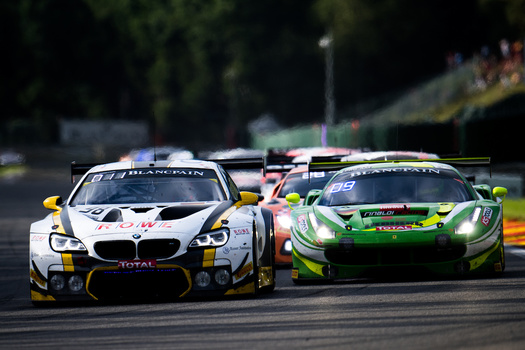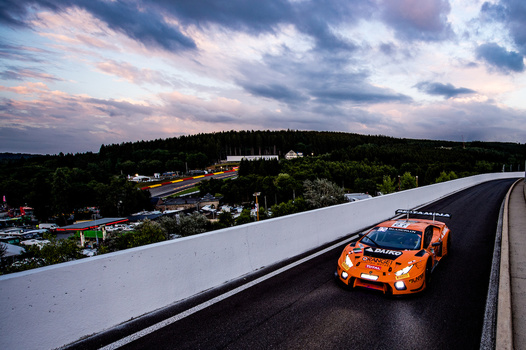If you think that photographing Total 24 Hours Spa has anything to do with cucumber slices and a hot stone massage, then you are very wrong indeed. I will say, however, that when you finish photographing one of these endurance races you might need 24 hours in a spa. Have look at this fascinating short documentary to find out more.
A 24-hour endurance race is such grueling competition that it doesn't just take its toll on the drivers but also on those capturing the event. But it takes a lot more than endurance to shoot a 24-hour motorsport event (or anything, for that matter) to a high standard. For instance, while getting your subject pin sharp is the bare minimum for most professional photographers, for photographers like Jamey Price things get a little more difficult because his subjects are often moving at 170 mph. Just rest with that thought for a minute. Now, imagine having to shoot those relatively slow-moving bullets for 24 hours. I don't know about you but I feel dizzy.
After he explains how he came to be a professional motorsport photographer and the sacrifices that needed to make to get him where he is today, in the video above Price gives us a little glimpse into the pre-race festivities at the picturesque Belgian town of Spa. From there, he ramps up the excitement with Race Day and the first few photo boxes to tick: autograph signing and one last chance to shoot the cars on the grid as they line up to start. At this stage he has been awake for seven hours; just 24 more hours of shooting to go. Because of the constantly changing conditions, Price needs to always be moving to where the good light is, and with over nine miles of track and a ton of gear, this is no walk in the park. After over six hours of shooting, he gets to unload his files (and bladder), eat, and sit down for a few minutes. After that it's back to the track, including the pit, to do some night shooting. By 2:30 a.m. all the walking with heavy gear starts to really take its toll on his body. But, not unlike the drivers, he must push on. At 5:15 a.m. he and another photographer decide to claim their territories for the sunrise. With the warmth and golden hue of the rising sun, and the bubbling apprehension of the gathering crowds for the checkered flag, Price finds a second wind. This, however, is not enough to see him to the finish line, so he manages to squeeze in 30 minutes of sleep under a table before the final few laps.
If you weren't intrigued by motorsport photography before, then this short documentary will surely pique your interest. It has certainly gotten my attention and I look forward to seeing more behind the scenes of this type of work. Thankfully, Price tells me that this is just a pilot episode and, depending on funding, he hopes to turn it into a four or five episode series. Here's to hoping it works out.
For you gearheads, Price shot this race with the Nikon D4s and D5 along with a variety of Nikon lenses, including 500mm f/4 VR, 70-200mm f/2.8 VR II, 24-70mm f/2.8, 14-24mm f/2.8, and an SB-910 strobe, while the film was shot on a Nikon D810.














That was really interesting. It looks like a demanding job. You would need to be physically fit too.
I agree. My back hurts just by looking at that 500 mm ! When I shoot outside, I know it was a good day of shooting if I have sore muscles the next day.
Great inside view video !
Great shots.
wow that's amazing! I was dead sore and tired after covering one supercross race for nearly 12 hours, can't imagine carrying all that gear plus all the walking he does.
Great BTS too!!
Fascinating..